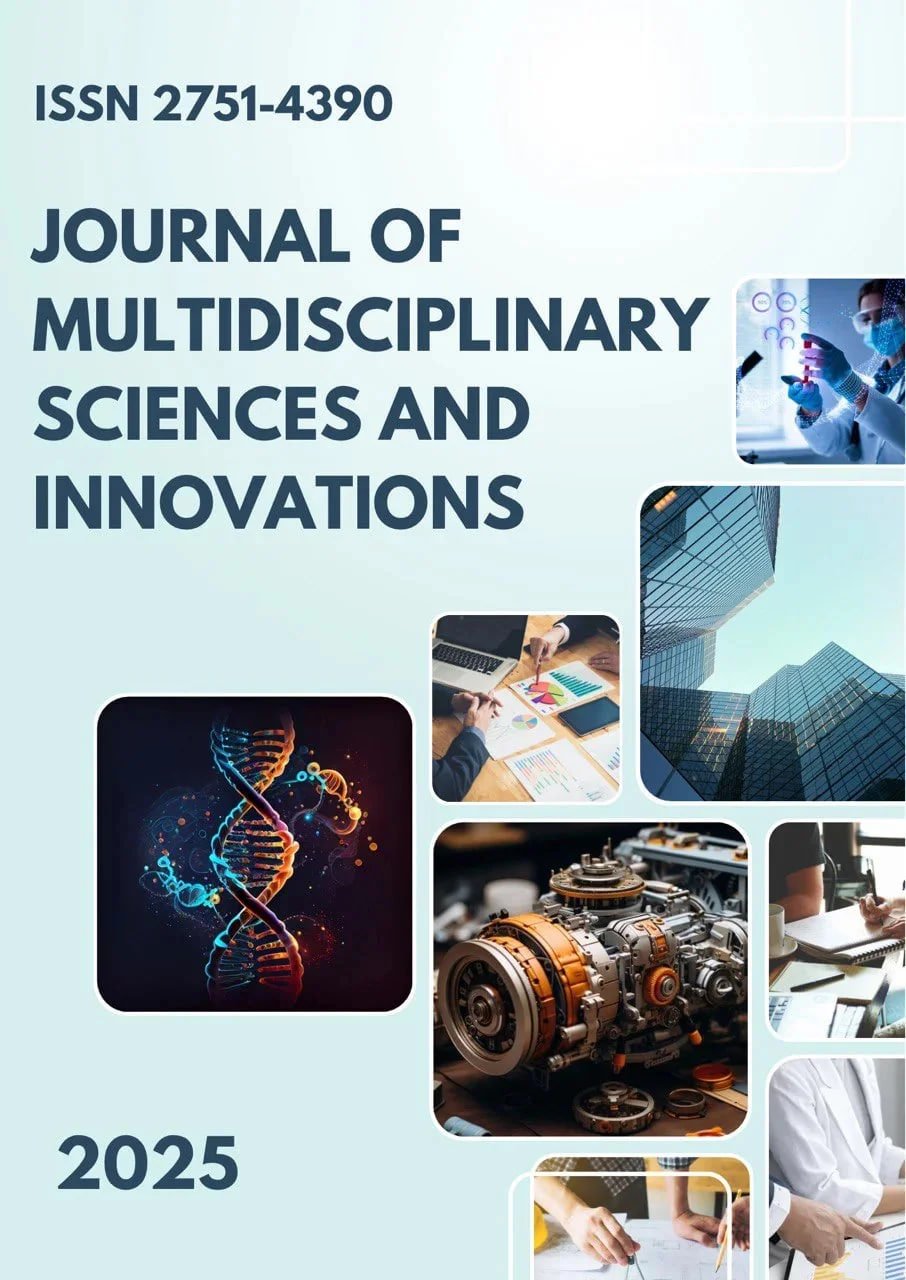MORPHOLOGICAL EVALUATION OF PULMONARY INTERSTITIAL FIBROSIS IN EXPERIMENTAL ANIMALS WITH ALLOXAN-INDUCED TYPE I DIABETES MELLITUS
Main Article Content
Abstract
x
Downloads
Article Details
Section

This work is licensed under a Creative Commons Attribution 4.0 International License.
Authors retain the copyright of their manuscripts, and all Open Access articles are disseminated under the terms of the Creative Commons Attribution License 4.0 (CC-BY), which licenses unrestricted use, distribution, and reproduction in any medium, provided that the original work is appropriately cited. The use of general descriptive names, trade names, trademarks, and so forth in this publication, even if not specifically identified, does not imply that these names are not protected by the relevant laws and regulations.
How to Cite
References
Critchley J.A., Restrepo B.I., Ronacher K. et al. Defining a Research Agenda to Address
the Converging Epidemics of Tuberculosis and Diabetes. Part 1: Epidemiology and Clinical
Management. Chest. 2017;152:165–173. 2. Kopf S., Groener J.B., Kender Z., Fleming T., Brune M., Riedinger C., Volk N., Herpel
E., Pesta D., Szendrödi J., Wielpütz M.O., Kauczor H.U., Katus H.A., Kreuter M., Nawroth P.P. Dyspnea and Restrictive Lung Disease: An Important Diabetes-Related Feature in Patients with
Type 2 Diabetes. Respiration. 2018;96:29–40. 3. Mayer-Davis E.J., Kahkoska A.R., Jefferies C., Dabelea D., Balde N., Gong X.C., Aschner P., Craig M.E. ISPAD Clinical Practice Consensus Guidelines 2018: Definition, Epidemiology, and Classification of Diabetes in Children and Adolescents. Pediatric Diabetes.
2018;19(Suppl. 27):7–20. DOI: 10.1111/pedi.12773. 4. Ronacher K., van Crevel R., Critchley J.A. et al. Defining a Research Agenda to Address
the Converging Epidemics of Tuberculosis and Diabetes: Part 2: Underlying Biologic
Mechanisms. Chest. 2017;152(1):174–180. doi:10.1016/j.chest.2017.02.032
5. Vainshelboim B., Oliveira J., Itzhakian S., Unterman A., Kramer G. Lifestyle and
Clinical Outcomes in Idiopathic Pulmonary Fibrosis. Respiration. 2018;95:27–34. 6. van den Borst B., Gosker H.R., Zeegers M.P., Schols A.M. Pulmonary Function in
Diabetes: A Meta-analysis. Chest. 2010;138:393–406. 7. Kikuchi R., Nakamura H., Aoshima K. Sitagliptin-Induced Diffuse Alveolar Hemorrhage
Mimicking Pulmonary Edema. J Family Med Prim Care. 2018;7:480–481. 8. Kolahian S., Leiss V., Nürnberg B. Diabetic Lung Disease: Fact or Fiction? Rev Endocr
Metab Disord. 2019;20:303–319. 9. Komissarova O.G., Abdullaev R.Y., Konyaeva O.O., Mikhailovsky A.M. Prevalence, Clinical Manifestations and Effectiveness of Treatment of Tuberculosis in Patients with Diabetes
Mellitus. Vrach. 2017;2:24–28. 10. Komissarova O.G., Abdullaev R.Y., Mikhaylovsky A.M. Diabetes mellitus as a risk
factor for tuberculosis: pathophysiological aspects. Medical Alliance. 2017; 3:28–34. 11. Komissarova O.G., Abdullaev R.Y., Mikhaylovsky A.M. Diabetes mellitus as a risk
factor for tuberculosis: pathophysiological aspects. Medical Alliance. 2017; 3:28–34. 12. Peterkova V.A., Ametov A.S., Mayorov A.Yu., Galstyan G.R., Laptev D.N., Chernikova
N.A. Resolutions of the Scientific Advisory Board: Application of Continuous Glucose
Monitoring with Intermittent Scanning Technology to Achieve Glycemic Control. Diabetes
Mellitus. 2021; 24(2):185–192. DOI: 10.14341/DM12753. 13. Nedomolkina S.A., Velikaya O.V., Zoloedov V.I., Chernykh T.M. Interaction of COPD
and Type 2 Diabetes Mellitus: Risk Factors and Mechanisms of Development. Modern Problems
of Science and Education. 2016; No. 2. URL: https://science- education.ru/ru/article/view?id=24165
14. NCD-RisC Collaboration. Worldwide trends in diabetes since 1980: a pooled analysis of
751 population-based studies with 4.4 million participants. Lancet. 2016; 387:1513–1530. 15. Shah S., Sonawane P., Nahar P., Vaidya S., Salvi S. Pulmonary function tests in type 2
diabetes mellitus and their correlation with glycemic control and disease duration. Lung India. 2013; 30:108–112. 16. Shestakova M.V., Sukhareva O.Yu. Diagnosis and choice of a method of treatment of
type 2 diabetes. Clinical Pharmacology. 2018; 27(2):3–9.

